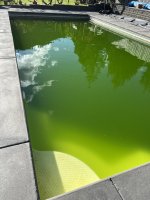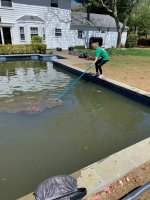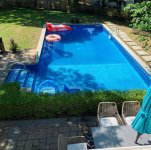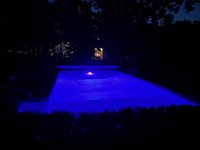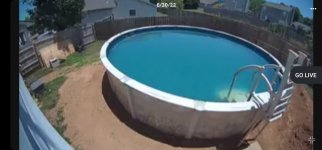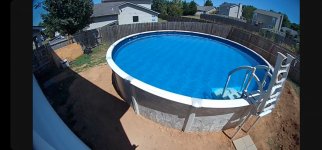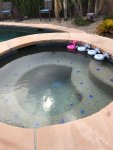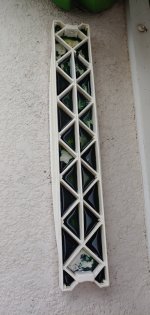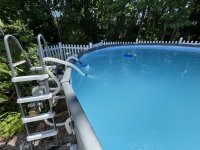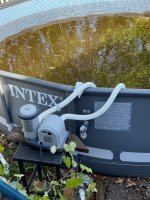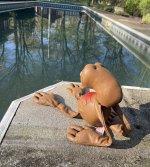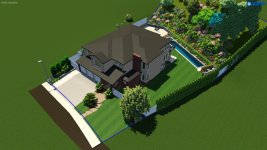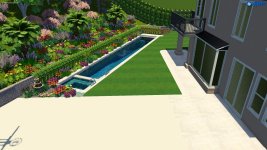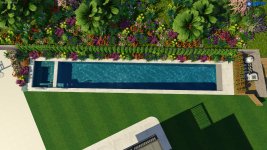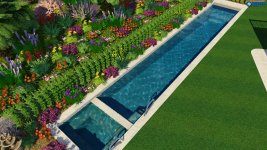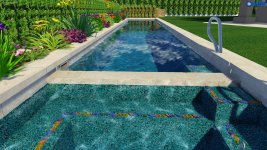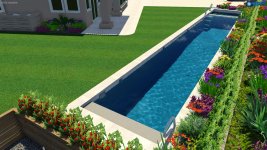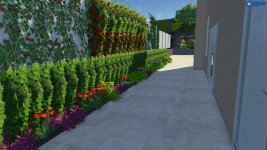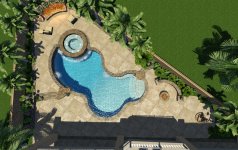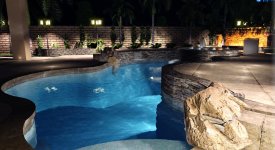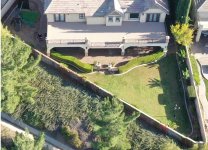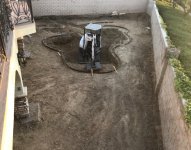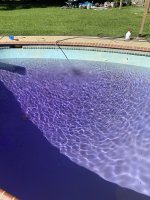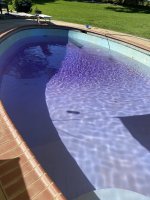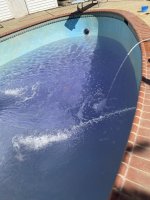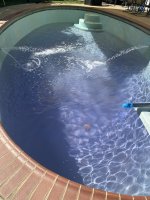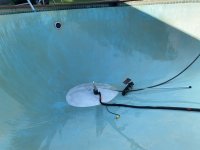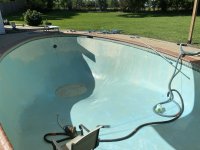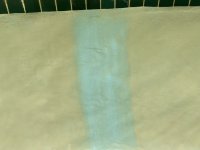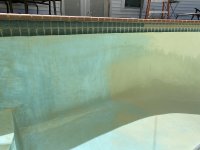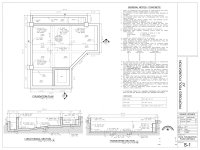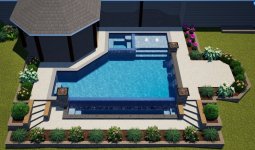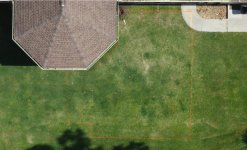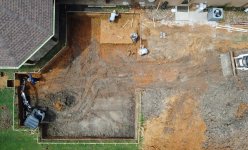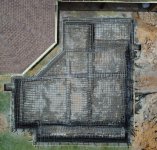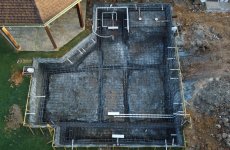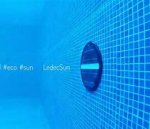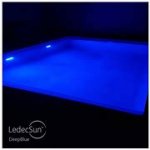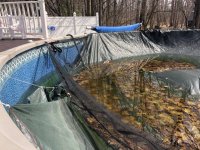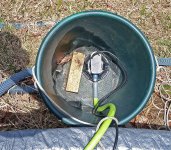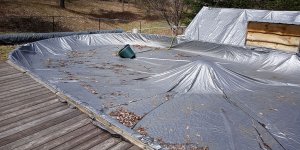Certified Pool Operator (CPO) training -- What is not taught
- By chem geek
- The Deep End...
- 97 Replies
This thread will discuss some of the topics that are either not taught or are taught with incorrect or incomplete information, at least as far as I can tell from those who have had CPO training. If any of you have had recent CPO training and can comment on whether the following is accurate in terms of not currently being taught, then that would be helpful and I will update this post accordingly. The purpose is to readily be able to list what areas need to be improved in the event that NSPF becomes willing to improve the CPO course or as a guide for those of you who take such courses to give constructive feedback. This thread may also be referenced from other threads where someone is quoting CPO information that is incomplete or inaccurate.
CPO certification is great, but none of the NSPF CPO, APSP or IPSSA courses/manuals teach the following information, at least not completely. Some of these courses are more targeted to commercial/public pool operation and cover many things other than just water chemistry that I have focused on below. I purchased the 2009 "CPO® Handbook, National Swimming Pool Foundation®" with front cover title "Pool & Spa Operator™ Handbook" and it is a very impressive manual. It is well organized, in full color, with many charts and examples and a lot of very good information. Nevertheless, it could be improved by covering the following information. In the following, the term "the handbook" refers to the handbook with the officially referenced name I just gave in quotes.
[EDIT] A detailed report of suggestions for improvement to the Handbook is in this Word file (or this PDF document) that I wrote. [END-EDIT]
Effects From Different Sources of Chlorine
The following are chemical facts independent of concentration of product or of pool or spa size [EDIT] (added info on affect on TA after accounting for chlorine addition and usage/consumption): [END-EDIT]
For every 10 ppm Free Chlorine (FC) added by Trichlor, it also increases Cyanuric Acid (CYA) by 6.1 ppm and decreases Total Alkalinity (TA) by 7.1 ppm.
For every 10 ppm FC added by Dichlor, it also increases CYA by 9.1 ppm and decreases TA by 3.5 ppm.
For every 10 ppm FC added by Cal-Hypo, it also increases Calcium Hardness (CH) by at least 7 ppm and increases TA by about 0.4 ppm.
For every 10 ppm FC added by ANY source of chlorine, there will be 8.2 ppm salt from when the chlorine gets used/consumed and converts to chloride. For bleach, chlorinating liquid, and lithium hypochlorite, there is an additional 8.2 ppm salt added upon addition so the net result is 16.5 ppm salt from these sources and the TA rises by 0.1-0.6 ppm depending on the amount of "excess lye" in the product.
The handbook does not disclose the above information for any of the chlorine sources except for Dichlor where it is stated that one pound per 10,000 gallons provides (for dihydrate) 6.7 ppm FC and 6 ppm stabilizer.
Using the chemical facts from different chlorine sources noted above, even at a low 1 ppm FC per day chlorine usage, this means an increase in CYA from Trichlor of nearly 110 ppm after a 6 month swim season if there is no dilution of the water. The salt added by bleach, chlorinating liquid or lithium hypochlorite, even at 2 ppm FC per day is about 590 ppm after 6 months. If there is continual dilution of the water annually of around 1/3rd the pool water volume (equivalent to a one-time dilution of around 28%), then the long-term CYA level in the example I gave would be around 330 ppm while the long-term salt level in the other example would be 1770 ppm. Remember that SWG pools usually have 3000 ppm salt. So it takes much more dilution to keep CYA in check than to keep salt levels in check (and in my examples I used double the chlorine usage rate for the salt example than for the CYA example, just to emphasize the point). A similar analysis using Cal-Hypo with a low 1 ppm FC per day would result in a long-term CH level of 383 ppm, but higher chlorine usage would result in higher CH levels so use of Cal-Hypo is more manageable than stabilized chlorine (assuming 1/3 pool volume annual dilution rates done via continuous dilution).
The handbook talks about the side effects, but without being specific (as above) so people don't have a clear idea of how quickly CYA or CH or salt build up and why that's a bigger problem for CYA than for CH which is a bigger problem than for salt (more on that later).
Total Dissolved Solids (TDS)
The industry says that high TDS is a problem. This is not exactly true. TDS is mostly salt and is only an issue if it gets very high (remember that SWG pools typically use 3000 ppm salt) in terms of increased corrosion rates from the higher conductivity (and chloride levels for stainless steel). TDS can be a rough measure of the age of the water (depending on bather load and source of chlorine used) but the main problem with higher TDS in residential pools is that it usually is associated with higher CYA levels from continued use of stabilized chlorine (Trichlor or Dichlor) and it is the higher CYA level that is the true source of some problems; in particular, algae growth.
In commercial/public pools where most of the chlorine demand is from bather load, the higher TDS from accumulated chloride that came from chlorine can be a proxy indicator for a buildup of unoxidized chemicals from bather waste and other organic material, but using regular water replacement as a function of bather load is a more reliable way of keeping the water fresh. One can also measure the overnight chlorine demand to determine if there are substances in the pool increasing chlorine demand. This analysis should be done after eliminating the known issues from a low FC/CYA ratio or other water chemistry parameters.
The handbook does refer to TDS as a proxy for organic matter buildup and increases the probability of metal corrosion, but doesn't note that in low bather load pools, such as most residential pools, TDS is mostly salt and the organic buildup may be relatively low.
Chlorine/CYA Relationship
The courses (and handbook) do not teach about the true effects of CYA on chlorine, even though this has been known since at least 1974 definitively determined in this paper. This is the technical foundation for the chlorine/CYA chart though this chart was originally developed more from observational experience by Ben Powell (more on that later below) based on the minimum FC/CYA levels for preventing algae growth. At a pH near 7.5, the equivalent Free Chlorine (FC) level with no CYA in terms of the same active chlorine (hypochlorous acid) concentration is roughly close to the FC/CYA ratio as derived in this post. So pools with an FC that is roughly 10% of the CYA level are equivalent to pools with an FC of around 0.1 ppm and no CYA. This is at cooler temperatures (closer to 77F so OK with pools in the 80-85 range; spas at 100-104F have a higher effective FC with no CYA).
The FC test does not measure active chlorine (hypochlorous acid) alone, but also measures hypochlorite ion and, most importantly measures all of the chlorine bound to CYA (i.e. chlorinated isocyanurates) since this gets released quickly in the time of the test (see this paper). Looking at FC alone without consideration of CYA gives a false sense of security since it does not measure the chlorine level responsible for most of the sanitation and oxidation. The reaction rates for chemical reactions are based on the instantaneous concentration, not on whether a chemical gets replenished by conversion from another form (i.e. chlorine bound to CYA). One should stop thinking of FC as meaning anything in terms of chlorine strength when there is CYA in the water. FC is simply a measurement of the total reservoir of chlorine available and NOT a measure of its active strength. The FC/CYA ratio (or scaled up version for spas) is the relevant number for chlorine's true strength for sanitation and oxidation.
I and others who are technically oriented on this forum have pored through the scientific literature and found that the chlorine/CYA relationship holds extremely well in almost every case, be it for killing of bacteria (here, here, here, here, here), inactivation of viruses (here, here), protozoan oocysts (here, here, here, here), inhibition of algae growth (this paper claimed no correlation, but real pools say otherwise; Sommerfeld never wrote back to me when I questioned this), and oxidation of ammonia and organics (here) as well as correlation with ORP (see this post, this paper and this paper). I've also gone through field study data where the industry makes claims that only Free Chlorine (FC) matters in "real pools" yet I saw that bacteria are killed so easily that you can't even draw that conclusion from such studies and that hypochlorous acid (HOCl) is at least as good a predictor though they never looked at that correlation nor the FC/CYA ratio as a proxy (see this thread).
The handbook does not talk about the chlorine/CYA relationship in detail and only indicates that with CYA in the water, higher chlorine concentrations or contact times are needed to inactivate cryptosporidium and that excessive levels of CYA may lead to an increased risk of algae.
TA and its Effect on Rising pH
The courses do not clearly explain how Total Alkalinity (TA), and specifically the carbonate portion of TA, is a SOURCE of rising pH so that as counter-intuitive as it may seem, a lower TA results in a lower rate of pH rise over time in most cases (when the pH rise is due to carbon dioxide outgassing). They do not teach that pools are intentionally OVER-CARBONATED to provide a pH buffer and to protect plaster and that this over-carbonation is the primary source of pH rise in pools using hypochlorite sources of chlorine. They do say to use a lower TA range of 80-100 ppm vs. 100-120 for acidic sources of chlorine such as Trichlor, but even lower TA levels may be needed in some cases (especially in spas using the Dichlor-then-bleach method). The ratio of how far out-of-equilibrium the carbon dioxide is in the water vs. the air at various pH and TA levels is shown in this chart though the rate of carbon dioxide outgassing appears to be related to the square of the TA rather than being linearly related (that is, the outgassing rate greatly outpaces the additional pH buffering at higher TA levels).
The handbook indicates that at higher levels of TA, the pH is usually higher than ideal and becomes very difficult to change, but does not indicate that TA itself is a source of rising pH due to carbon dioxide outgassing. In the Spa & Therapy Operations section, when discussing pH, there is a discussion of aeration and carbon dioxide outgassing causing the pH to rise (and it says the TA decreases which is incorrect; the TA only drops when acid is added as acid lowers both pH and TA). However, even in this discussion it is not made clear that this effect can be reduced by lowering the TA level and supplementing pH buffering with a different non-carbonate pH buffer such as borates.
Net pH of Hypochlorite Sources of Chlorine
Hypochlorite sources of chlorine (bleach, chlorinating liquid, Cal-Hypo, lithium hypochlorite) are close to pH neutral when accounting for chlorine usage/consumption, except for the excess lye in some bleach and chlorinating liquid. This is described technically in this post. 6% Clorox Regular bleach has a very small amount of excess lye in it (pH 11.9 which implies 0.06% excess lye) so is very close to pH neutral when accounting for chlorine usage/consumption. Off-brand Ultra bleaches have a fairly high amount of excess lye (pH 12.5 or higher and 0.25% excess lye or higher). Chlorinating liquid varies, though even the best has a moderate amount of excess lye. Nevertheless, 12.5% chlorinating liquid with a pH of 12.5 and 0.25% excess lye (such as found here) results in a pH rise of around 0.1 unit per month assuming 2 ppm FC per day chlorine usage (so quite manageable). Chlorinating liquid closer to a pH of 13.0 has around 0.8% excess lye so over 3 times the pH rise rate or nearly 0.1 unit per week. Except for the high excess lye cases, the bulk of actual pH rise is usually due to carbon dioxide outgassing.
The handbook is misleading in terms of the net pH of disinfectants since only the effect on pH of addition of the disinfectant is discussed. There is no discussion about how chlorine consumption/usage is acidic which makes the net pH of most hypochlorite sources of chlorine closer to pH neutral and makes Dichlor net acidic. The only net pH rise over time from hypochlorite sources of chlorine comes from any "excess lye" in them, which is minimal in 6% Clorox Bleach and is low in some chlorinating liquid (though is higher in other chlorinating liquid and in many off-brand bleaches).
True Cost of Different Chlorine Sources
Trichlor is not the least expensive source of chlorine when accounting for pH adjustment as described in this post. Bleach is often the least expensive source though Cal-Hypo and chlorinating liquid are sometimes close, though this varies a lot by region. Many people just look at the % Available Chlorine thinking that a higher number is a better value, but this is just a weight % of available chlorine and the price per pound of chlorinating liquid and bleach are very low (since it's mostly water) -- it is the price per increase in Free Chlorine (FC) that is what matters.
The handbook does not discuss the costs of chlorine sources (except noting that lithium hypochlorite has a relatively high cost) nor the costs of pH adjustment for some of these sources.
Breakpoint Chlorination
The 10x rule for breakpoint chlorination is wrong and only now some industry people are starting to address this as described here and here, though they are still only accounting for the mistake of not considering that combined chlorine already used up a chlorine atom in combining with ammonia and they are not yet considering that there is still a factor of 5 error in their approach since the units used to derive the 10x rule come from chlorine (measured in ppm Cl2) oxidation of ammonia (measured in ppm N) whereas combined chlorine is measured in the same units as chlorine (i.e. ppm Cl2) where the Cl2 units are 5 times higher than the N units (that's the molecular weight ratio between the two). The oxidation of a combined chlorine that is monochlorourea (i.e. chlorine combined with urea) may require 3x, but that still far from 10x. There also isn't any getting "stuck" -- one can just add more chlorine. When one has persistent CC, it is not due to getting "stuck" but from compounds that do not oxidize as quickly. More technical details about this are described in this post.
The handbook has a newer breakpoint chlorination rule, but it is still a "10x" rule, though uses a target FC as 10x of the CC rather than using an incrementally added 10x amount. It incorrectly states that adding less than the breakpoint calculated amount may not achieve breakpoint, not recognizing that the 10x rule is wrong when starting with CC (it's correct when starting with ammonia measured in ppm N units).
Shocking a Pool
In a residential pool with typically low bather load, it is not necessary to shock the pool regularly if the appropriate FC/CYA ratio is consistently maintained. Oxidation of bather waste occurs continuously and the Combined Chlorine (CC) is usually <= 0.5 ppm, often <= 0.2 ppm. Shocking is normally done in pools that use stabilized chlorine because their CYA climbs making the chlorine less effective so they need to shock to accelerate the oxidation of bather waste (which is slower due to lower active chlorine concentration) and to kill nascent algae growth. Shocking should only be done if there is an unusual event such as very high bather load, vomit, urine, diarrhea, dead animal, etc. or if the CC > 0.5 ppm (usually from excessive pollen or other organic matter that has entered the pool). As noted above under breakpoint chlorination, nothing gets "stuck" by not shocking the pool; shocking merely increases the active chlorine level to accelerate the rate of oxidation (and sanitation). So long as there is measurable FC, there is oxidation and sanitation occurring though possibly at a slower rate depending on the FC/CYA ratio. Indoor pools (even residential ones with low bather load) are more likely to get persistent CC and usually supplemental oxidation (UV, ozone, non-chlorine shock, enzymes) is needed to address this problem. It is possible that the UV in sunlight helps to prevent CC buildup in outdoor pools and is usually enough, along with normal active chlorine levels, to prevent significant CC in residential outdoor pools.
The handbook talks about shocking as an oxidation process to remove contaminants, but does not prescribe a specific schedule.
Attaining pH Stability, especially for SWG pools
On this forum, we have figured out, through both theory and experiments and actual usage in real pools (and spas), how to make the pH nearly stable in most pools, including those using saltwater chlorine generators (SWGs). We did this in SWG pools not only by lowering the TA level, but also by targeting a higher CYA level of 80 ppm and by using 50 ppm Borates to reduce chlorine demand and let one turn-down the SWG on-time. We also figured out how 50 ppm Borates helps to prevent scaling in salt cells and possibly reduce the "white stuff" effect when using The Liquidator.
The handbook does not talk about the specific challenges of pH rise in SWG pools, nor the solutions for this described above (lower TA, higher CYA, use of Borates).
High Chlorine Demand and Chlorine "Lock"
We figured out the mystery of unusually high chlorine demand, particularly upon spring opening after a pool has been "let go", even if the water is clear. Some bacteria can convert CYA into ammonia which creates a huge chlorine demand that can be calculated by measurements as described in this post. For every 10 ppm CYA that is degraded, it produces around 3 ppm ammonia that can take up to 30 ppm FC cumulatively added to eliminate. My personal experience of this effect is described in this thread. The myths of "chlorine lock" either from high CYA levels or from this conversion of CYA into ammonia are no longer mysteries, but known effects that can be understood, measured, and readily dealt with due to our increased knowledge.
The handbook does not talk about this particular problem of opening a pool to unusually high chlorine demand from bacterial conversion of CYA to ammonia.
Grocery/Hardware Store vs. Pool Store Chemical Equivalents
We know that Arm & Hammer Super Washing Soda is identical to most pH Up products (both are sodium carbonate) and that Arm & Hammer Baking Soda is identical to Alkalinity Up products (both are sodium bicarbonate) and that 20 Mule Team Borax can be used to raise the pH with half the rise in TA and that Dowflake or Peladow or Tetra (de-icers) are identical to Calcium Hardness Increaser products (both are calcium chloride, though may be anhydrous vs. dihydrate), and that 6% Clorox Regular bleach has the lowest amount of excess lye in it resulting in a lower net pH rise over time than any chlorinating liquid from a pool store. More details on these products is in this post.
The handbook does not talk about this topic.
Procedures for Lowering TA
There is also the acid column or slug method myth that was discredited in this paper. It's not that the method doesn't work at all, since the amount of TA lowering is solely dependent on the amount of acid you add and not how you add it, but rather that it is not the safest method (pooling acid in one area can damage plaster/vinyl surfaces) nor the most efficient (it can take longer for the pH to recover in time for you to add more acid to lower the TA some more). The efficient procedure for lowering TA (especially lowering the TA a lot) is described in this post and in the Pool School Lower Total Alkalinity procedure. The procedure works because the outgassing of carbon dioxide is accelerated at lower pH as shown in this chart.
The handbook only says to add acid to lower the TA and does not discuss more efficient ways of lowering it via lowering the pH and increasing aeration (along with the acid addition).
Phosphate Levels and Algae Control by Chlorine
There is a myth of not being able to control algae by chlorine alone and that high phosphate levels must be lowered. Though phosphate levels do influence the rate of algae growth, phosphate removers only lower orthophosphate, not organic phosphates, so may not always completely stop algae growth and nitrates are also a limiting growth factor. Phosphate removers should be seen in the same vein as algicides that inhibit algae, but may not prevent it completely. Chlorine alone can be used to control algae if the FC/CYA ratio is above minimum levels (see chlorine/CYA chart described above).
The handbook does not promote the use of phosphate removers, though does note that phosphates and nitrates are nutrients required for algae growth, but also notes the many different sources of phosphates (including storage in algae themselves). Various algicides are discussed with various pros and cons. The handbook notes that routine superchlorination and the use of an algicide on a maintenance basis are useful tools in the prevention of algae. However, there is no discussion of how chlorine alone, using a sufficient FC/CYA ratio, can prevent algae growth, though it is noted that it is very important that disinfectant residuals be maintained at all times to prevent the growth of algae.
pH Effect on Chlorine When CYA is Present
The presence of CYA acts as an active chlorine (hypochlorous acid) buffer making it much less susceptible to change at different pH. This is described in this post where one can see the traditional pH vs. chlorine graph and the true graph when CYA is present (this latter graph is not taught and it also shows the significantly lowered active chlorine level when CYA is present). When there is no CYA, going from a pH of 7.5 to 8.0 lowers the hypochlorous acid level by about 53% (from 1.45 to 0.69 ppm with 3 ppm FC), but with 30 ppm CYA it is only lowered by about 14% (from 0.042 to 0.036 ppm with 3 ppm FC).
The handbook only shows a traditional chart of hypochlorous acid and hypochlorite ion vs. pH and does not show the effect of CYA as described above.
CYA Protection of Chlorine from Sunlight
CYA protects chlorine from degradation from the UV in sunlight in two different ways. At lower CYA levels, the main effect is having most of the chlorine bound to CYA where it degrades much more slowly. At higher CYA levels, especially noticed from 60-80 ppm, the CYA may shield lower depths from UV such that higher CYA levels at 70-80 ppm, even with correspondingly higher FC levels to keep the FC/CYA ratio constant, result in lower absolute chlorine loss. This is the main reason to have a high CYA level for outdoor SWG pools in order to reduce chlorine usage so that the SWG on-time can be lowered which results in a slower rate of pH rise (possibly due to less aeration and less undissolved chlorine gas outgassing).
Commercial/public pools with moderate-to-high bather loads usually do not see any benefit of saved chlorine usage above a CYA level of 20-30 ppm, but this is primarily because most of the chlorine usage at these CYA levels is from bather load (oxidation of bather waste) so higher CYA levels would not result in a noticeable benefit. This is not the case with residential pools which typically have low bather loads such that degradation of chlorine by the UV in sunlight is a significant factor.
The handbook does not discuss the varying apparent protection of CYA as a function of bather load.
CYA and Indoor Pools and Any Spas
Current industry recommendations and many state regulations say to not use any CYA in indoor pools or in any spas (at least commercial/public, though the most common chlorine source used in residential spas is Dichlor-only). This may be resulting in faster oxidation of swimsuits, skin and hair, faster corrosion, and higher levels of very irritating and volatile nitrogen trichloride as described in this post. Too much CYA is also a problem as the rate of oxidation is slowed too much so monochloramine and dichloramine can build up. 4 ppm FC with 20 ppm CYA for indoor pools may be a reasonable sweet spot for sufficient, but not too high, oxidation rates while lowering nitrogen trichloride production.
The handbook does not discuss how CYA moderates chlorine's strength in ways as described above, though it does discuss (for spas) how dosing too much disinfectant may form more potentially toxic disinfection byproducts and may make bleaching of swimsuits and hair more likely.
Turnover Rate and Law of Dilution
[EDIT] NOTE: The 2014 edition of the handbook corrected the percentages to no longer use the inappropriate Gage and Bidwell Law of Dilution. [END-EDIT]
The theoretical best-case model for continuous dilution of water has in one turnover all but e-1=0.368 or 37% of the water circulated, so 63% goes through the filter. In two turnovers this is all but e-2=0.135 or 14%, for three turnovers e-3=0.0497 or 5%, for four turnovers e-4=0.0183 or 2%. There is a model often quoted in the pool/spa industry called the Gage and Bidwell Law of Dilution that is misapplied to describe the amount of water seen by the filter. In fact, as described on PDF page 10 (paper page 1195) in this 1926 paper, this model is one where dirt or other contamination is introduced by bathers once a day (which in itself isn't very realistic) and the calculation is the percent clarification of pool water after equilibrium (steady-state) is obtained relative to the amount added per day. With this model, one turnover has 42% clarification so one pound of contamination per day would in the steady-state of one turnover per day have 0.58 pounds still in the water. With two turnovers, there is 84% clarification or 16% of the daily added amount left in the water. With three turnovers, there is 95% clarification or 5% left in the water. With four turnovers, there is 98% clarification or 2% left in the water. These clarification percentages are not the amount of water that "sees the filter" in one day. The reason the clarification percentages are lower than the percentages of water seen by the filter is that the model assumes regular introduction of additional contaminants each day and is a percentage of relative clarification, not the amount of water actually filtered per day.
The handbook incorrectly uses the Gage and Bidwell Law of Dilution clarification percentages as a percentage of unfiltered water.
[EDIT] NOTE: The 2014 edition of the handbook no longer uses the incorrect Gage and Bidwell Law of Dilution percentages. [END-EDIT]
Acknowledgement and Further Info
Much of this knowledge (at a high level) did not come from me or from this forum's outstanding members, though some has (I mostly contribute to the explanations using fundamental chemistry while many others contribute a wide variety of experience and technical knowledge in many areas). Ben Powell, who managed commercial and public pools, started PoolSolutions and The PoolForum and deserves a lot of credit for getting to the truth about many pool issues as well as helping thousands of pool owners. The rest of us are just following in his footsteps, extending and expanding the knowledge.
For most of us on this forum, we maintain our pools using bleach or chlorinating liquid alone (or as the primary source of chlorine, unless an SWG is used) with perhaps a small amount of acid needed. That's it -- no algicides, no phosphate removers, no clarifiers or floculants, no regular shocking. In my own 16,000 gallon pool shown here and here, I only use around 1 ppm FC per day of 12.5% chlorinating liquid I get from my local pool store (they reuse the bottles, which is better than recycling) and even with a small amount of acid every month or so, it's around $15 per month in chemical costs (except for annual refreshing of calcium, some CYA and now borates after rain dilution over the winter). I have a mostly opaque electric safety cover, which helps keep the chlorine usage low, but the pool is used 1-2 hours every day during the week and longer on weekends. Oh, and did I mention that my pool has typically had 2000-3000 ppb and higher phosphates and averages 88F temperature yet does not get algae? Most people on this forum have similar experiences and many have had bad experiences with pool stores and pool services where it really isn't their fault because they are simply not taught the whole truth from manufacturers and industry courses. There are over 20,000 members at The PoolForum (which unfortunately is closed to new membership [EDIT] it is now open to membership, but reports around 16,000 members [END-EDIT]) and over 10,000 members here at Trouble Free Pool (and growing rapidly [EDIT] now over 72,000 [END-EDIT]) where we help each other out because we unfortunately do not get this kind of help from many (but not all) pool stores, though that will hopefully start to change as industry education improves.
Richard
CPO certification is great, but none of the NSPF CPO, APSP or IPSSA courses/manuals teach the following information, at least not completely. Some of these courses are more targeted to commercial/public pool operation and cover many things other than just water chemistry that I have focused on below. I purchased the 2009 "CPO® Handbook, National Swimming Pool Foundation®" with front cover title "Pool & Spa Operator™ Handbook" and it is a very impressive manual. It is well organized, in full color, with many charts and examples and a lot of very good information. Nevertheless, it could be improved by covering the following information. In the following, the term "the handbook" refers to the handbook with the officially referenced name I just gave in quotes.
[EDIT] A detailed report of suggestions for improvement to the Handbook is in this Word file (or this PDF document) that I wrote. [END-EDIT]
Effects From Different Sources of Chlorine
The following are chemical facts independent of concentration of product or of pool or spa size [EDIT] (added info on affect on TA after accounting for chlorine addition and usage/consumption): [END-EDIT]
For every 10 ppm Free Chlorine (FC) added by Trichlor, it also increases Cyanuric Acid (CYA) by 6.1 ppm and decreases Total Alkalinity (TA) by 7.1 ppm.
For every 10 ppm FC added by Dichlor, it also increases CYA by 9.1 ppm and decreases TA by 3.5 ppm.
For every 10 ppm FC added by Cal-Hypo, it also increases Calcium Hardness (CH) by at least 7 ppm and increases TA by about 0.4 ppm.
For every 10 ppm FC added by ANY source of chlorine, there will be 8.2 ppm salt from when the chlorine gets used/consumed and converts to chloride. For bleach, chlorinating liquid, and lithium hypochlorite, there is an additional 8.2 ppm salt added upon addition so the net result is 16.5 ppm salt from these sources and the TA rises by 0.1-0.6 ppm depending on the amount of "excess lye" in the product.
The handbook does not disclose the above information for any of the chlorine sources except for Dichlor where it is stated that one pound per 10,000 gallons provides (for dihydrate) 6.7 ppm FC and 6 ppm stabilizer.
Using the chemical facts from different chlorine sources noted above, even at a low 1 ppm FC per day chlorine usage, this means an increase in CYA from Trichlor of nearly 110 ppm after a 6 month swim season if there is no dilution of the water. The salt added by bleach, chlorinating liquid or lithium hypochlorite, even at 2 ppm FC per day is about 590 ppm after 6 months. If there is continual dilution of the water annually of around 1/3rd the pool water volume (equivalent to a one-time dilution of around 28%), then the long-term CYA level in the example I gave would be around 330 ppm while the long-term salt level in the other example would be 1770 ppm. Remember that SWG pools usually have 3000 ppm salt. So it takes much more dilution to keep CYA in check than to keep salt levels in check (and in my examples I used double the chlorine usage rate for the salt example than for the CYA example, just to emphasize the point). A similar analysis using Cal-Hypo with a low 1 ppm FC per day would result in a long-term CH level of 383 ppm, but higher chlorine usage would result in higher CH levels so use of Cal-Hypo is more manageable than stabilized chlorine (assuming 1/3 pool volume annual dilution rates done via continuous dilution).
The handbook talks about the side effects, but without being specific (as above) so people don't have a clear idea of how quickly CYA or CH or salt build up and why that's a bigger problem for CYA than for CH which is a bigger problem than for salt (more on that later).
Total Dissolved Solids (TDS)
The industry says that high TDS is a problem. This is not exactly true. TDS is mostly salt and is only an issue if it gets very high (remember that SWG pools typically use 3000 ppm salt) in terms of increased corrosion rates from the higher conductivity (and chloride levels for stainless steel). TDS can be a rough measure of the age of the water (depending on bather load and source of chlorine used) but the main problem with higher TDS in residential pools is that it usually is associated with higher CYA levels from continued use of stabilized chlorine (Trichlor or Dichlor) and it is the higher CYA level that is the true source of some problems; in particular, algae growth.
In commercial/public pools where most of the chlorine demand is from bather load, the higher TDS from accumulated chloride that came from chlorine can be a proxy indicator for a buildup of unoxidized chemicals from bather waste and other organic material, but using regular water replacement as a function of bather load is a more reliable way of keeping the water fresh. One can also measure the overnight chlorine demand to determine if there are substances in the pool increasing chlorine demand. This analysis should be done after eliminating the known issues from a low FC/CYA ratio or other water chemistry parameters.
The handbook does refer to TDS as a proxy for organic matter buildup and increases the probability of metal corrosion, but doesn't note that in low bather load pools, such as most residential pools, TDS is mostly salt and the organic buildup may be relatively low.
Chlorine/CYA Relationship
The courses (and handbook) do not teach about the true effects of CYA on chlorine, even though this has been known since at least 1974 definitively determined in this paper. This is the technical foundation for the chlorine/CYA chart though this chart was originally developed more from observational experience by Ben Powell (more on that later below) based on the minimum FC/CYA levels for preventing algae growth. At a pH near 7.5, the equivalent Free Chlorine (FC) level with no CYA in terms of the same active chlorine (hypochlorous acid) concentration is roughly close to the FC/CYA ratio as derived in this post. So pools with an FC that is roughly 10% of the CYA level are equivalent to pools with an FC of around 0.1 ppm and no CYA. This is at cooler temperatures (closer to 77F so OK with pools in the 80-85 range; spas at 100-104F have a higher effective FC with no CYA).
The FC test does not measure active chlorine (hypochlorous acid) alone, but also measures hypochlorite ion and, most importantly measures all of the chlorine bound to CYA (i.e. chlorinated isocyanurates) since this gets released quickly in the time of the test (see this paper). Looking at FC alone without consideration of CYA gives a false sense of security since it does not measure the chlorine level responsible for most of the sanitation and oxidation. The reaction rates for chemical reactions are based on the instantaneous concentration, not on whether a chemical gets replenished by conversion from another form (i.e. chlorine bound to CYA). One should stop thinking of FC as meaning anything in terms of chlorine strength when there is CYA in the water. FC is simply a measurement of the total reservoir of chlorine available and NOT a measure of its active strength. The FC/CYA ratio (or scaled up version for spas) is the relevant number for chlorine's true strength for sanitation and oxidation.
I and others who are technically oriented on this forum have pored through the scientific literature and found that the chlorine/CYA relationship holds extremely well in almost every case, be it for killing of bacteria (here, here, here, here, here), inactivation of viruses (here, here), protozoan oocysts (here, here, here, here), inhibition of algae growth (this paper claimed no correlation, but real pools say otherwise; Sommerfeld never wrote back to me when I questioned this), and oxidation of ammonia and organics (here) as well as correlation with ORP (see this post, this paper and this paper). I've also gone through field study data where the industry makes claims that only Free Chlorine (FC) matters in "real pools" yet I saw that bacteria are killed so easily that you can't even draw that conclusion from such studies and that hypochlorous acid (HOCl) is at least as good a predictor though they never looked at that correlation nor the FC/CYA ratio as a proxy (see this thread).
The handbook does not talk about the chlorine/CYA relationship in detail and only indicates that with CYA in the water, higher chlorine concentrations or contact times are needed to inactivate cryptosporidium and that excessive levels of CYA may lead to an increased risk of algae.
TA and its Effect on Rising pH
The courses do not clearly explain how Total Alkalinity (TA), and specifically the carbonate portion of TA, is a SOURCE of rising pH so that as counter-intuitive as it may seem, a lower TA results in a lower rate of pH rise over time in most cases (when the pH rise is due to carbon dioxide outgassing). They do not teach that pools are intentionally OVER-CARBONATED to provide a pH buffer and to protect plaster and that this over-carbonation is the primary source of pH rise in pools using hypochlorite sources of chlorine. They do say to use a lower TA range of 80-100 ppm vs. 100-120 for acidic sources of chlorine such as Trichlor, but even lower TA levels may be needed in some cases (especially in spas using the Dichlor-then-bleach method). The ratio of how far out-of-equilibrium the carbon dioxide is in the water vs. the air at various pH and TA levels is shown in this chart though the rate of carbon dioxide outgassing appears to be related to the square of the TA rather than being linearly related (that is, the outgassing rate greatly outpaces the additional pH buffering at higher TA levels).
The handbook indicates that at higher levels of TA, the pH is usually higher than ideal and becomes very difficult to change, but does not indicate that TA itself is a source of rising pH due to carbon dioxide outgassing. In the Spa & Therapy Operations section, when discussing pH, there is a discussion of aeration and carbon dioxide outgassing causing the pH to rise (and it says the TA decreases which is incorrect; the TA only drops when acid is added as acid lowers both pH and TA). However, even in this discussion it is not made clear that this effect can be reduced by lowering the TA level and supplementing pH buffering with a different non-carbonate pH buffer such as borates.
Net pH of Hypochlorite Sources of Chlorine
Hypochlorite sources of chlorine (bleach, chlorinating liquid, Cal-Hypo, lithium hypochlorite) are close to pH neutral when accounting for chlorine usage/consumption, except for the excess lye in some bleach and chlorinating liquid. This is described technically in this post. 6% Clorox Regular bleach has a very small amount of excess lye in it (pH 11.9 which implies 0.06% excess lye) so is very close to pH neutral when accounting for chlorine usage/consumption. Off-brand Ultra bleaches have a fairly high amount of excess lye (pH 12.5 or higher and 0.25% excess lye or higher). Chlorinating liquid varies, though even the best has a moderate amount of excess lye. Nevertheless, 12.5% chlorinating liquid with a pH of 12.5 and 0.25% excess lye (such as found here) results in a pH rise of around 0.1 unit per month assuming 2 ppm FC per day chlorine usage (so quite manageable). Chlorinating liquid closer to a pH of 13.0 has around 0.8% excess lye so over 3 times the pH rise rate or nearly 0.1 unit per week. Except for the high excess lye cases, the bulk of actual pH rise is usually due to carbon dioxide outgassing.
The handbook is misleading in terms of the net pH of disinfectants since only the effect on pH of addition of the disinfectant is discussed. There is no discussion about how chlorine consumption/usage is acidic which makes the net pH of most hypochlorite sources of chlorine closer to pH neutral and makes Dichlor net acidic. The only net pH rise over time from hypochlorite sources of chlorine comes from any "excess lye" in them, which is minimal in 6% Clorox Bleach and is low in some chlorinating liquid (though is higher in other chlorinating liquid and in many off-brand bleaches).
True Cost of Different Chlorine Sources
Trichlor is not the least expensive source of chlorine when accounting for pH adjustment as described in this post. Bleach is often the least expensive source though Cal-Hypo and chlorinating liquid are sometimes close, though this varies a lot by region. Many people just look at the % Available Chlorine thinking that a higher number is a better value, but this is just a weight % of available chlorine and the price per pound of chlorinating liquid and bleach are very low (since it's mostly water) -- it is the price per increase in Free Chlorine (FC) that is what matters.
The handbook does not discuss the costs of chlorine sources (except noting that lithium hypochlorite has a relatively high cost) nor the costs of pH adjustment for some of these sources.
Breakpoint Chlorination
The 10x rule for breakpoint chlorination is wrong and only now some industry people are starting to address this as described here and here, though they are still only accounting for the mistake of not considering that combined chlorine already used up a chlorine atom in combining with ammonia and they are not yet considering that there is still a factor of 5 error in their approach since the units used to derive the 10x rule come from chlorine (measured in ppm Cl2) oxidation of ammonia (measured in ppm N) whereas combined chlorine is measured in the same units as chlorine (i.e. ppm Cl2) where the Cl2 units are 5 times higher than the N units (that's the molecular weight ratio between the two). The oxidation of a combined chlorine that is monochlorourea (i.e. chlorine combined with urea) may require 3x, but that still far from 10x. There also isn't any getting "stuck" -- one can just add more chlorine. When one has persistent CC, it is not due to getting "stuck" but from compounds that do not oxidize as quickly. More technical details about this are described in this post.
The handbook has a newer breakpoint chlorination rule, but it is still a "10x" rule, though uses a target FC as 10x of the CC rather than using an incrementally added 10x amount. It incorrectly states that adding less than the breakpoint calculated amount may not achieve breakpoint, not recognizing that the 10x rule is wrong when starting with CC (it's correct when starting with ammonia measured in ppm N units).
Shocking a Pool
In a residential pool with typically low bather load, it is not necessary to shock the pool regularly if the appropriate FC/CYA ratio is consistently maintained. Oxidation of bather waste occurs continuously and the Combined Chlorine (CC) is usually <= 0.5 ppm, often <= 0.2 ppm. Shocking is normally done in pools that use stabilized chlorine because their CYA climbs making the chlorine less effective so they need to shock to accelerate the oxidation of bather waste (which is slower due to lower active chlorine concentration) and to kill nascent algae growth. Shocking should only be done if there is an unusual event such as very high bather load, vomit, urine, diarrhea, dead animal, etc. or if the CC > 0.5 ppm (usually from excessive pollen or other organic matter that has entered the pool). As noted above under breakpoint chlorination, nothing gets "stuck" by not shocking the pool; shocking merely increases the active chlorine level to accelerate the rate of oxidation (and sanitation). So long as there is measurable FC, there is oxidation and sanitation occurring though possibly at a slower rate depending on the FC/CYA ratio. Indoor pools (even residential ones with low bather load) are more likely to get persistent CC and usually supplemental oxidation (UV, ozone, non-chlorine shock, enzymes) is needed to address this problem. It is possible that the UV in sunlight helps to prevent CC buildup in outdoor pools and is usually enough, along with normal active chlorine levels, to prevent significant CC in residential outdoor pools.
The handbook talks about shocking as an oxidation process to remove contaminants, but does not prescribe a specific schedule.
Attaining pH Stability, especially for SWG pools
On this forum, we have figured out, through both theory and experiments and actual usage in real pools (and spas), how to make the pH nearly stable in most pools, including those using saltwater chlorine generators (SWGs). We did this in SWG pools not only by lowering the TA level, but also by targeting a higher CYA level of 80 ppm and by using 50 ppm Borates to reduce chlorine demand and let one turn-down the SWG on-time. We also figured out how 50 ppm Borates helps to prevent scaling in salt cells and possibly reduce the "white stuff" effect when using The Liquidator.
The handbook does not talk about the specific challenges of pH rise in SWG pools, nor the solutions for this described above (lower TA, higher CYA, use of Borates).
High Chlorine Demand and Chlorine "Lock"
We figured out the mystery of unusually high chlorine demand, particularly upon spring opening after a pool has been "let go", even if the water is clear. Some bacteria can convert CYA into ammonia which creates a huge chlorine demand that can be calculated by measurements as described in this post. For every 10 ppm CYA that is degraded, it produces around 3 ppm ammonia that can take up to 30 ppm FC cumulatively added to eliminate. My personal experience of this effect is described in this thread. The myths of "chlorine lock" either from high CYA levels or from this conversion of CYA into ammonia are no longer mysteries, but known effects that can be understood, measured, and readily dealt with due to our increased knowledge.
The handbook does not talk about this particular problem of opening a pool to unusually high chlorine demand from bacterial conversion of CYA to ammonia.
Grocery/Hardware Store vs. Pool Store Chemical Equivalents
We know that Arm & Hammer Super Washing Soda is identical to most pH Up products (both are sodium carbonate) and that Arm & Hammer Baking Soda is identical to Alkalinity Up products (both are sodium bicarbonate) and that 20 Mule Team Borax can be used to raise the pH with half the rise in TA and that Dowflake or Peladow or Tetra (de-icers) are identical to Calcium Hardness Increaser products (both are calcium chloride, though may be anhydrous vs. dihydrate), and that 6% Clorox Regular bleach has the lowest amount of excess lye in it resulting in a lower net pH rise over time than any chlorinating liquid from a pool store. More details on these products is in this post.
The handbook does not talk about this topic.
Procedures for Lowering TA
There is also the acid column or slug method myth that was discredited in this paper. It's not that the method doesn't work at all, since the amount of TA lowering is solely dependent on the amount of acid you add and not how you add it, but rather that it is not the safest method (pooling acid in one area can damage plaster/vinyl surfaces) nor the most efficient (it can take longer for the pH to recover in time for you to add more acid to lower the TA some more). The efficient procedure for lowering TA (especially lowering the TA a lot) is described in this post and in the Pool School Lower Total Alkalinity procedure. The procedure works because the outgassing of carbon dioxide is accelerated at lower pH as shown in this chart.
The handbook only says to add acid to lower the TA and does not discuss more efficient ways of lowering it via lowering the pH and increasing aeration (along with the acid addition).
Phosphate Levels and Algae Control by Chlorine
There is a myth of not being able to control algae by chlorine alone and that high phosphate levels must be lowered. Though phosphate levels do influence the rate of algae growth, phosphate removers only lower orthophosphate, not organic phosphates, so may not always completely stop algae growth and nitrates are also a limiting growth factor. Phosphate removers should be seen in the same vein as algicides that inhibit algae, but may not prevent it completely. Chlorine alone can be used to control algae if the FC/CYA ratio is above minimum levels (see chlorine/CYA chart described above).
The handbook does not promote the use of phosphate removers, though does note that phosphates and nitrates are nutrients required for algae growth, but also notes the many different sources of phosphates (including storage in algae themselves). Various algicides are discussed with various pros and cons. The handbook notes that routine superchlorination and the use of an algicide on a maintenance basis are useful tools in the prevention of algae. However, there is no discussion of how chlorine alone, using a sufficient FC/CYA ratio, can prevent algae growth, though it is noted that it is very important that disinfectant residuals be maintained at all times to prevent the growth of algae.
pH Effect on Chlorine When CYA is Present
The presence of CYA acts as an active chlorine (hypochlorous acid) buffer making it much less susceptible to change at different pH. This is described in this post where one can see the traditional pH vs. chlorine graph and the true graph when CYA is present (this latter graph is not taught and it also shows the significantly lowered active chlorine level when CYA is present). When there is no CYA, going from a pH of 7.5 to 8.0 lowers the hypochlorous acid level by about 53% (from 1.45 to 0.69 ppm with 3 ppm FC), but with 30 ppm CYA it is only lowered by about 14% (from 0.042 to 0.036 ppm with 3 ppm FC).
The handbook only shows a traditional chart of hypochlorous acid and hypochlorite ion vs. pH and does not show the effect of CYA as described above.
CYA Protection of Chlorine from Sunlight
CYA protects chlorine from degradation from the UV in sunlight in two different ways. At lower CYA levels, the main effect is having most of the chlorine bound to CYA where it degrades much more slowly. At higher CYA levels, especially noticed from 60-80 ppm, the CYA may shield lower depths from UV such that higher CYA levels at 70-80 ppm, even with correspondingly higher FC levels to keep the FC/CYA ratio constant, result in lower absolute chlorine loss. This is the main reason to have a high CYA level for outdoor SWG pools in order to reduce chlorine usage so that the SWG on-time can be lowered which results in a slower rate of pH rise (possibly due to less aeration and less undissolved chlorine gas outgassing).
Commercial/public pools with moderate-to-high bather loads usually do not see any benefit of saved chlorine usage above a CYA level of 20-30 ppm, but this is primarily because most of the chlorine usage at these CYA levels is from bather load (oxidation of bather waste) so higher CYA levels would not result in a noticeable benefit. This is not the case with residential pools which typically have low bather loads such that degradation of chlorine by the UV in sunlight is a significant factor.
The handbook does not discuss the varying apparent protection of CYA as a function of bather load.
CYA and Indoor Pools and Any Spas
Current industry recommendations and many state regulations say to not use any CYA in indoor pools or in any spas (at least commercial/public, though the most common chlorine source used in residential spas is Dichlor-only). This may be resulting in faster oxidation of swimsuits, skin and hair, faster corrosion, and higher levels of very irritating and volatile nitrogen trichloride as described in this post. Too much CYA is also a problem as the rate of oxidation is slowed too much so monochloramine and dichloramine can build up. 4 ppm FC with 20 ppm CYA for indoor pools may be a reasonable sweet spot for sufficient, but not too high, oxidation rates while lowering nitrogen trichloride production.
The handbook does not discuss how CYA moderates chlorine's strength in ways as described above, though it does discuss (for spas) how dosing too much disinfectant may form more potentially toxic disinfection byproducts and may make bleaching of swimsuits and hair more likely.
Turnover Rate and Law of Dilution
[EDIT] NOTE: The 2014 edition of the handbook corrected the percentages to no longer use the inappropriate Gage and Bidwell Law of Dilution. [END-EDIT]
The theoretical best-case model for continuous dilution of water has in one turnover all but e-1=0.368 or 37% of the water circulated, so 63% goes through the filter. In two turnovers this is all but e-2=0.135 or 14%, for three turnovers e-3=0.0497 or 5%, for four turnovers e-4=0.0183 or 2%. There is a model often quoted in the pool/spa industry called the Gage and Bidwell Law of Dilution that is misapplied to describe the amount of water seen by the filter. In fact, as described on PDF page 10 (paper page 1195) in this 1926 paper, this model is one where dirt or other contamination is introduced by bathers once a day (which in itself isn't very realistic) and the calculation is the percent clarification of pool water after equilibrium (steady-state) is obtained relative to the amount added per day. With this model, one turnover has 42% clarification so one pound of contamination per day would in the steady-state of one turnover per day have 0.58 pounds still in the water. With two turnovers, there is 84% clarification or 16% of the daily added amount left in the water. With three turnovers, there is 95% clarification or 5% left in the water. With four turnovers, there is 98% clarification or 2% left in the water. These clarification percentages are not the amount of water that "sees the filter" in one day. The reason the clarification percentages are lower than the percentages of water seen by the filter is that the model assumes regular introduction of additional contaminants each day and is a percentage of relative clarification, not the amount of water actually filtered per day.
The handbook incorrectly uses the Gage and Bidwell Law of Dilution clarification percentages as a percentage of unfiltered water.
[EDIT] NOTE: The 2014 edition of the handbook no longer uses the incorrect Gage and Bidwell Law of Dilution percentages. [END-EDIT]
Acknowledgement and Further Info
Much of this knowledge (at a high level) did not come from me or from this forum's outstanding members, though some has (I mostly contribute to the explanations using fundamental chemistry while many others contribute a wide variety of experience and technical knowledge in many areas). Ben Powell, who managed commercial and public pools, started PoolSolutions and The PoolForum and deserves a lot of credit for getting to the truth about many pool issues as well as helping thousands of pool owners. The rest of us are just following in his footsteps, extending and expanding the knowledge.
For most of us on this forum, we maintain our pools using bleach or chlorinating liquid alone (or as the primary source of chlorine, unless an SWG is used) with perhaps a small amount of acid needed. That's it -- no algicides, no phosphate removers, no clarifiers or floculants, no regular shocking. In my own 16,000 gallon pool shown here and here, I only use around 1 ppm FC per day of 12.5% chlorinating liquid I get from my local pool store (they reuse the bottles, which is better than recycling) and even with a small amount of acid every month or so, it's around $15 per month in chemical costs (except for annual refreshing of calcium, some CYA and now borates after rain dilution over the winter). I have a mostly opaque electric safety cover, which helps keep the chlorine usage low, but the pool is used 1-2 hours every day during the week and longer on weekends. Oh, and did I mention that my pool has typically had 2000-3000 ppb and higher phosphates and averages 88F temperature yet does not get algae? Most people on this forum have similar experiences and many have had bad experiences with pool stores and pool services where it really isn't their fault because they are simply not taught the whole truth from manufacturers and industry courses. There are over 20,000 members at The PoolForum (which unfortunately is closed to new membership [EDIT] it is now open to membership, but reports around 16,000 members [END-EDIT]) and over 10,000 members here at Trouble Free Pool (and growing rapidly [EDIT] now over 72,000 [END-EDIT]) where we help each other out because we unfortunately do not get this kind of help from many (but not all) pool stores, though that will hopefully start to change as industry education improves.
Richard


